|
#1
| |||
| |||
|
Can you please give me the UGC National Eligibility Test Commerce previous year question papers? As you are looking for the previous year question paper of UGC NET exam of Commerce so here I am giving you the syllabus of it and the question paper is in the form of PDF file Syllabus for UGC NET (Commerce) Unit I Second Generation reforms Policy Environment Liberalization Legal Environment of business in India Industrial Policy and Implementation Industrial Growth and Structural changes Globalization and Privatization Environment protection Economic policies Economic Planning Economic Environment Consumer protection Competition Policy Business Environment Unit II Valuation and Absorption of shares Reconstruction Ratio analysis Partnership Accounts Marginal costing Holding company accounts Fund flow analysis Financial Statements Cash flow analysis Capital and Revenue Budgetary control Basic Accounting Concepts Advanced Company Accounts Unit III Pricing Strategies Laws of variable Proportion Laws of returns In difference Curve analysis Elasticity of Demand Different market Conditions Demand Analysis Cost, revenue and Price determination Unit IV Sampling needs Sampling Methods and Errors Data Entry Data Collection and Analysis Computer Application to Functional areas Co relation and Regression Business Statistics and Data Processing Analysis and Interpretation of data Unit V Staffing Planning process Planning Objectives and Strategies Organizational Structure Leadership Decision making Corporate Ethics and Governance Controlling Business Management Unit VI Product Decisions Pricing Decisions Organizing and Control Marketing Planning Marketing mix Marketing Management Market Segmentation Market Environment Evolution of Marketing Consumer Behavior Unit VII Working capital Management Financial Management Financial and Operating Leverage Dividend Policy Cost of capital Capital Structure Capital budgeting Unit VIII Wage and Salary Administration Training and Development Succession Planning Recruitment and Selection Performance Appraisal Morale and Productivity Industrial Relations in India Incentives and Fringe benefits Human Resource Planning Health, Safety, Welfare and Social Security Employee Participation in Management Compensation Unit IX Types of banks Rural banking RBI NPA NABARD Development banking Capital Adequacy norms Banking Sector Reforms Banking Importance to business Banking and Financial Institution Unit X WTO Theoretical foundations of International Business Structure of India’s Foreign Trade Regulation and Promotion of Foreign Trade International Liquidity International Economic institutions International Business Balance of payments List of Elective Subjects Marketing International Business Income Tax Law and Tax Planning Human Resource Management Accounting and Finance Apart from the above subjects, a general paper on Teaching and Research Aptitude is also part of the UGC NET (Commerce) syllabus which is as follows - Communication Data interpretation Higher Education System – Governance, Polity and Administration Information and Communication Technology (ICT) Logical Reasoning People and Environment Reading Comprehension Reasoning (Including mathematical) Research Aptitude Teaching Aptitude There will two types of questions, objective type questions and short essay type questions. UGC NET Commerce Question Paper   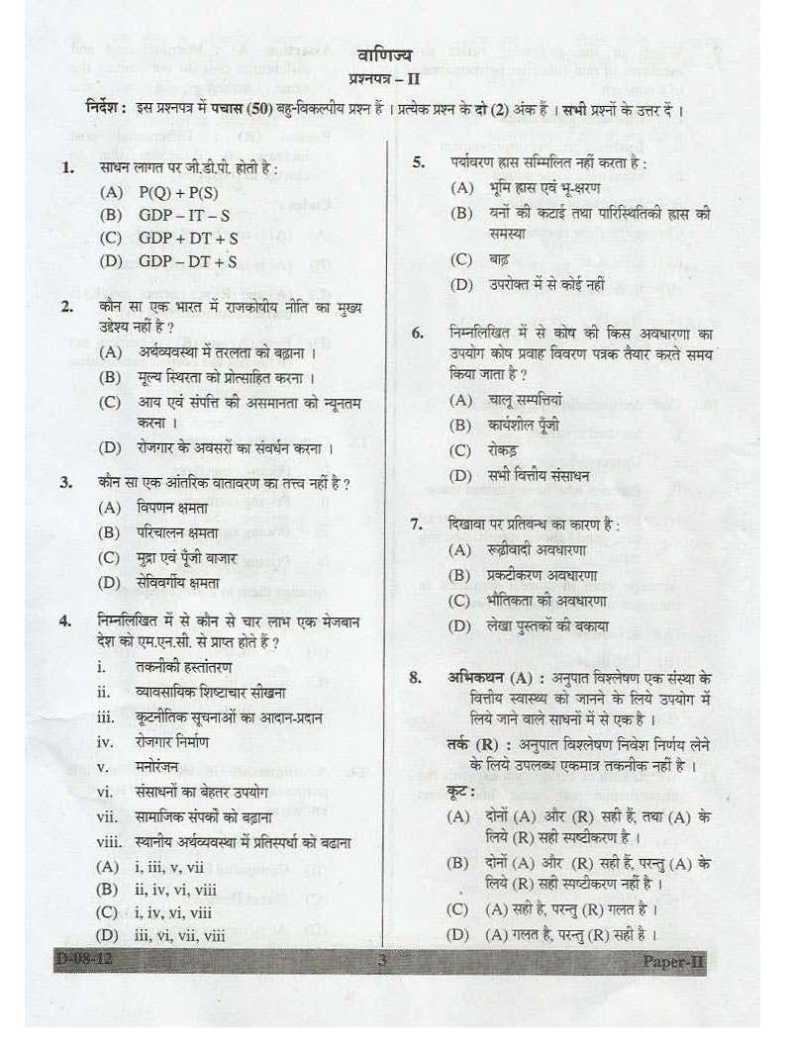 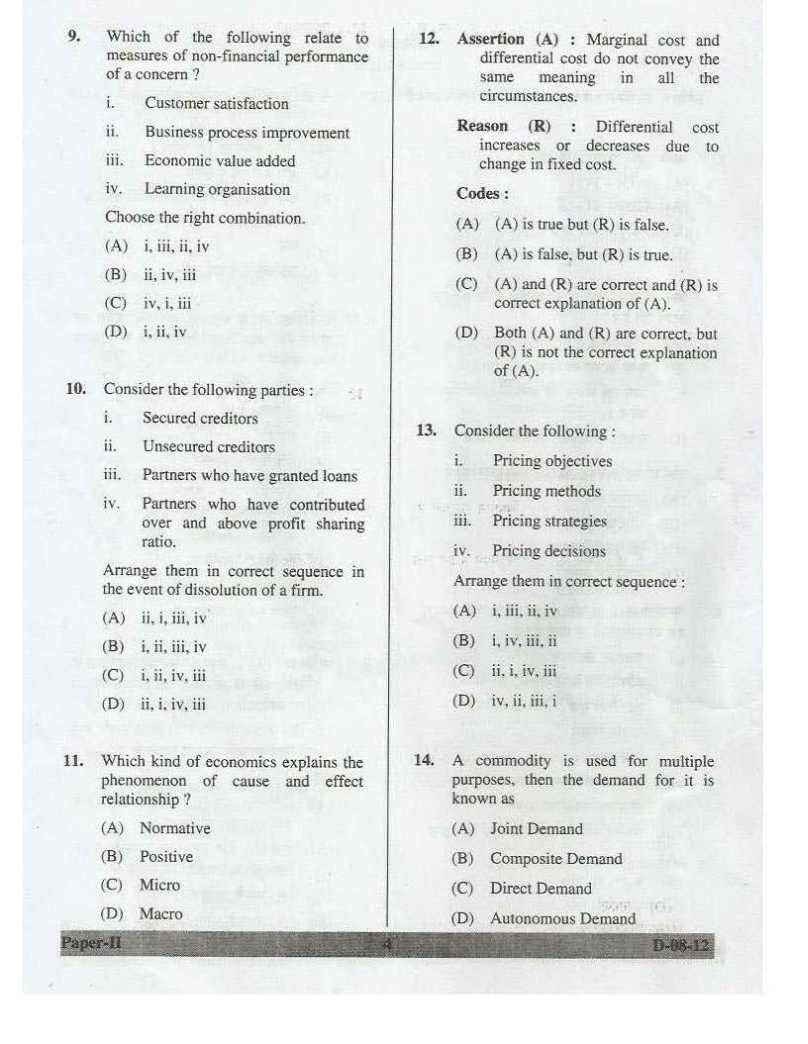  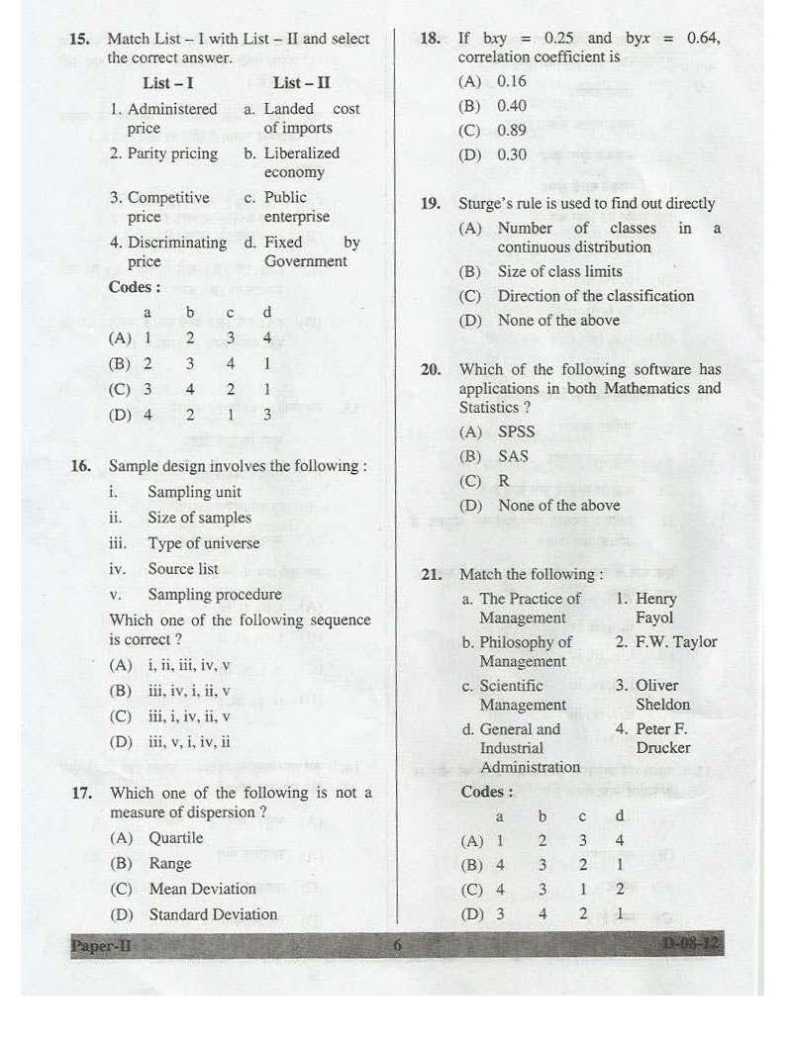 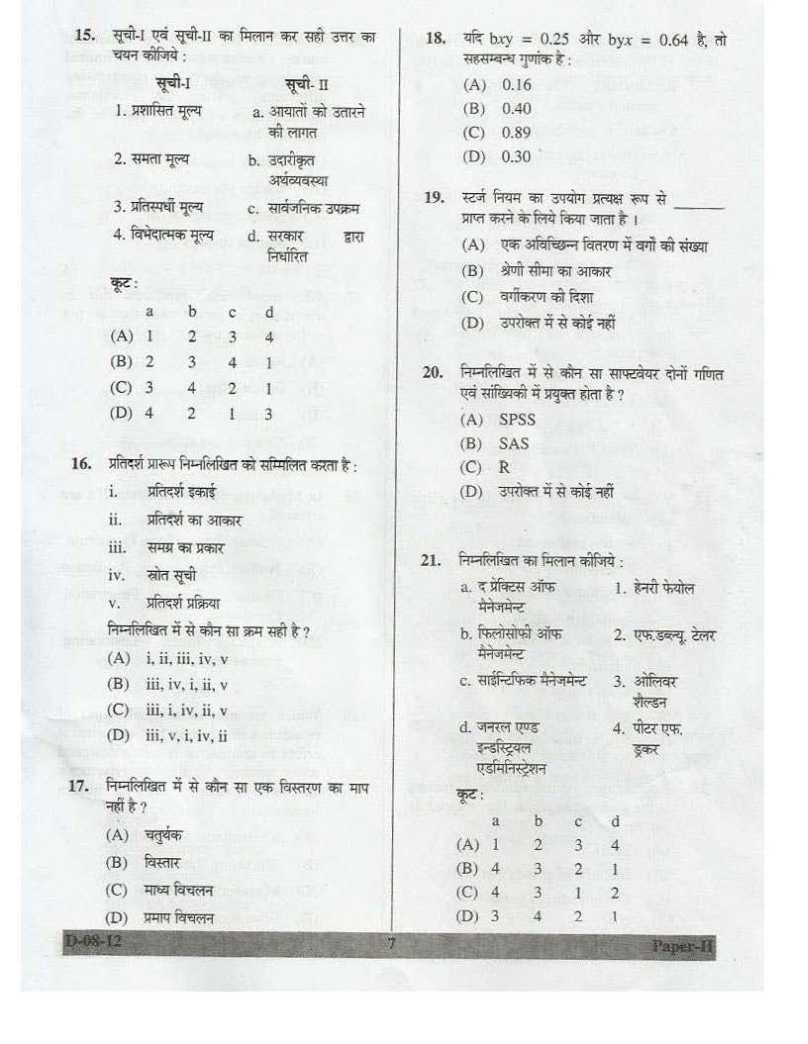  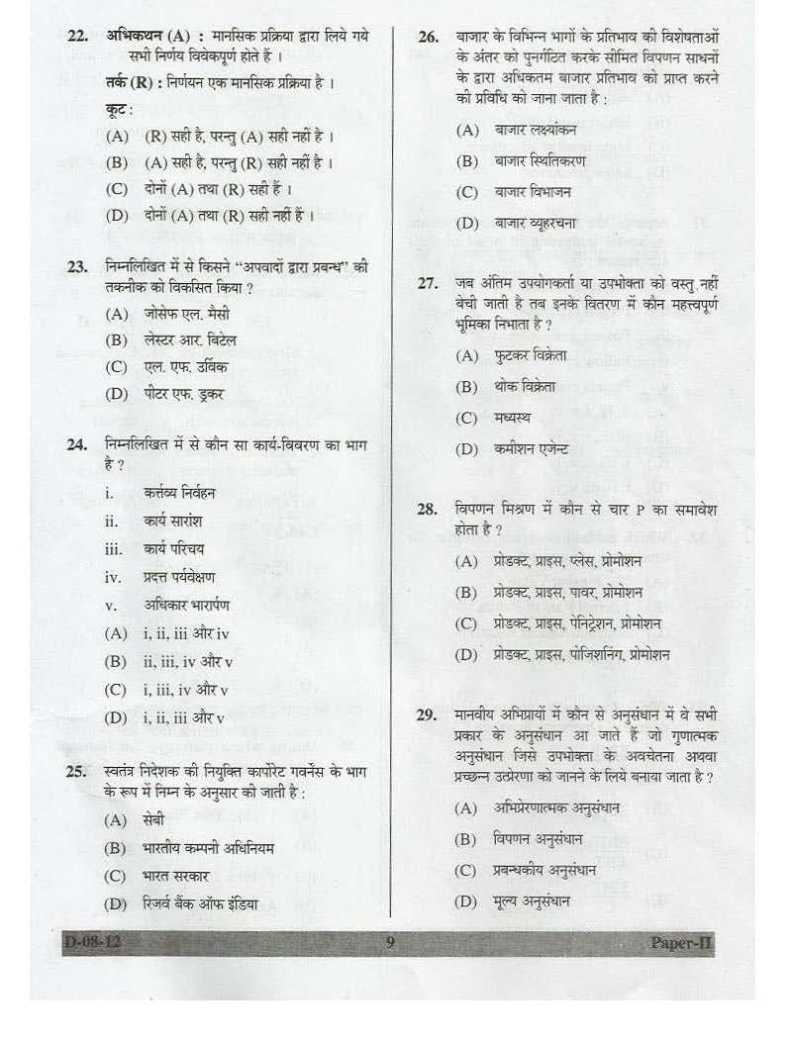 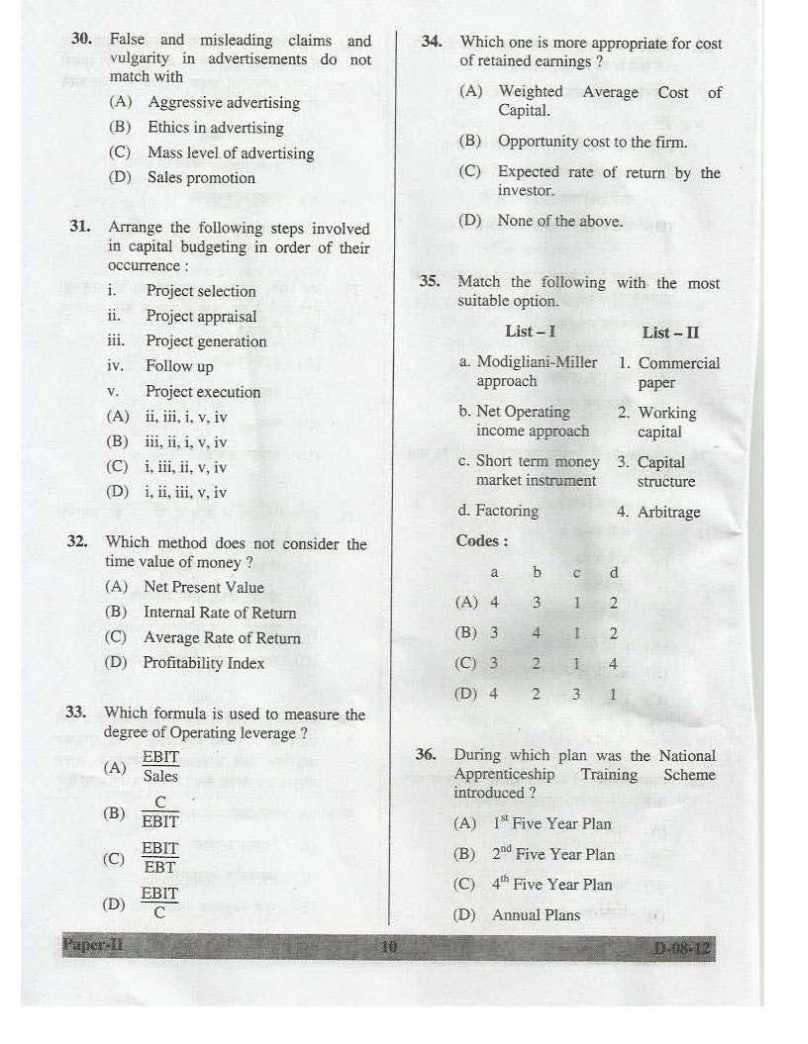 Last edited by Aakashd; October 15th, 2019 at 01:29 PM. |
|
#2
| ||||
| ||||
|
As you want to get the UGC National Eligibility Test Commerce previous year question papers so here is the information of the same for you: Some content of the file has been given here: 1. In accounting, profit prior to incorporation is treated as (A) Revenue Reserve (B) Secret Reserve (C) Capital Reserve (D) General Reserve 2. Receipts and Payments Account is prepared by (A) Manufacturing concerns (B) Non-Trading concerns (C) Trading concerns (D) Companies registered under Companies Act, 1956 3. Owners equity stands for (A) Fixed Assets minus Fixed Liabilities. (B) Fixed Assets minus Current Liabilities. (C) Current Assets minus Fixed Liabilities. (D) Total Assets minus Total outside Liabilities. 4. When the Debt Turnover Ratio is 4, what is the average collection period ? (A) 5 months (B) 4 months (C) 3 months (D) 2 months 5. Which of the following will result into sources of funds ? (i) Increase in current assets (ii) Decrease in current assets (iii) Increase in current liabilities (iv) Decrease in current liabilities Codes : (A) (i) and (iv) (B) (ii) and (iii) (C) (i) and (iii) (D) (ii) and (iv) 6. In marginal costing, contribution is equal to (A) Sales – Fixed cost (B) Sales – Variable cost (C) Sales – Profit (D) Sales – Variable Cost + Fixed cost 7. The funds available with a company after paying all claims including tax and dividend is called (A) Net Profit (B) Net Operating Profit (C) Capital Profit (D) Retained Earnings 8. Assertion (A) : Accounting information refers to only events which are concerned with business firm. Reason (R) : Accounting information is presented in financial statements. Codes : (A) (A) is correct, but (R) is wrong. (B) Both (A) and (R) are correct. (C) (A) is wrong, but (R) is correct. (D) Both (A) and (R) are wrong. 9. When average cost is declining (A) Marginal cost must be declining. (B) Marginal cost must be above average cost. (C) Marginal cost must be below average cost. (D) Marginal cost must be rising. 10. ABC Ltd. has declared 40% dividend. Which one of the following does it mean ? (A) The company has declared 40% of net profit as dividend. (B) The company has declared 40% of profits after tax as dividend. (C) The company will provide dividend 40% on issued capital. (D) The company will provide dividend 40% on paid-up capital. 11. The main objective of Accounting Standards is (A) To prepare the accounting reports which is easily understood by common man. (B) To comply with the legal formalities. (C) To harmonise the diversified accounting practices. (D) To comply with the requirements of the International Accounting Standards (IAS). 12. Given below are two statements : I. Activity ratios show where the company is going. II. Balance Sheet ratios show how the company stand. Codes : (A) I is correct, but II is wrong. (B) Both I and II are correct. (C) I is wrong, but II is correct. (D) Both I and II are wrong. 13. Income and Expenditure Account of non-profit organisation is a (A) Real Account (B) Nominal Account (C) Personal Account (D) Representative Personal Account 14. Which of the following statements are correct ? I. Inventory includes raw materials, finished goods and work – in – progress. II. Inventory is a part of the working capital. III. Inventory includes goods likely to be purchased. Codes : (A) I, II and III (B) II and III (C) I and III (D) I and II 15. If the current ratio is 2 : 1 and working capital is ` 60,000, what is the value of the Current Assets ? (A) ` 60,000 (B) ` 1,00,000 (C) ` 1,20,000 (D) ` 1,80,000 16. Which of the following steps of purchase decision process is in sequence ? 1. Problem recognition 2. Search for alternatives 3. Evaluation of alternatives 4. Purchase action 5. Post purchase action Codes : (A) 1, 3, 2, 4, 5 (B) 1, 2, 4, 3, 5 (C) 2, 1, 3, 5, 4 (D) 1, 2, 3, 4, 5 17. What is customer value ? (A) Ratio between the customer’s perceived benefits and the resources used to obtain these benefits. (B) Excess of satisfaction over expectation. (C) Post purchase dissonance (D) None of the above 18. Match the items of List – I with items of List – II. List – I List – II a. The silent mental repetition of information. 1. Encoding b. The process by which we select a word or visual image to represent a perceived object. 2. Rehearsal c. Where information is kept temporarily before further processing. 3. Working Memory d. The stage of real memory in which information is processed and held for just a brief period. 4. Store house Codes : a b c d (A) 2 1 4 3 (B) 1 2 3 4 (C) 3 2 1 4 (D) 4 3 2 1 19. Fill in the blanks : Statements Alternatives a. Loyal customers ____ products. 1. Less attention b. Loyal customers are ____ sensitive. 2. Cheaper c. Loyal customers pay ____ to competitor’s advertising. 3. Less price d. Serving existing customer is ____ 4. Buy more Codes : a b c d (A) 3 1 2 4 (B) 4 3 1 2 (C) 2 1 3 4 (D) 4 3 2 1 20. Assertion (A) : High customer expectations lead to dissatisfaction as product performance never matches them. Reason (R) : Product performance is always customer specific. Codes : (A) Both (A) and (R) are correct. (B) Both (A) and (R) are incorrect. (C) (A) is correct, but (R) is incorrect. (D) (R) is correct, but (A) is incorrect. 21. Under which concept of marketing do you find greater emphasis on techniques and technology of production ? (A) Product (B) Selling (C) Marketing (D) None 22. Which is used for short-term sales achievement ? (A) Personal selling (B) Advertising (C) Sales Promotion (D) Public Relations 23. Public distribution system relates to (A) Marketing system (B) Retailing system (C) Industrial system (D) Selling system 24. Who do buy more, complain less, spread positive word of mouth, ensure a large customer base and repeat business ? (A) Satisfied customers (B) Delighted customers (C) Industrial customers (D) None of the above 25. There are impulses which persuade a customer to buy certain products without evaluating the positive and negative value of the same. (A) Emotional motives (B) Blind motives (C) Egoistic motives (D) All the above 26. Which subject is relevant to the study of consumer behaviour ? (A) Economics (B) Psychology (C) Sociology (D) All the above 27. Find an incorrect statement. (A) Consumer attitude can be summarized as evaluation of an object. (B) Attitudes are learned. (C) Attitudes are synonymous with behaviour. (D) Attitudes have motivational qualities. 28. Who is considered Father of Scientific Management ? (A) Peter Drucker (B) F.W. Taylor (C) Victor Vroom (D) Henry Fayol 29. Who did give the concept of hierarchy of needs ? (A) Fredrick Herzberg (B) Victor Vroom (C) Douglas Mcgregor (D) A.H. Maslow 30. Assertion (A) : Management is a continuous process. Reason (R) : Managers first plan, then organise and finally perform the function of controlling. Codes : (A) Both (A) and (R) are correct and (R) is correct explanation of (A). (B) Both(A) and (R) are correct, but (R) is not a correct explanation of (A). (C) (A) is correct, but (R) is incorrect. (D) (A) is incorrect, but (R) is correct. 31. Induction of employees relates to (A) Organisational awareness (B) Training programme (C) Introduction (D) Assignment of duties 32. ‘Kinked’ demand curve is related with (A) Monopoly (B) Discriminating monopoly (C) Oligopoly (D) Perfect competition 33. Who is not associated with HRM ? (A) Michael J Jucius (B) Dale Yodar (C) Edvoin B. Flippo (D) K.K. Devit 34. Merit rating is not known as (A) Efficiency Rating (B) Service Rating (C) Job Rating (D) Experience Rating 35. Match the items of List – I with the items of List – II. List – I List – II a. FEMA 1. 1986 b. Indian Factories Act 2. 1999 c. Industrial Dispute Act 3. 1948 d. Consumer Protection Act 4. 1947 Codes : a b c d (A) 4 2 3 1 (B) 3 1 2 4 (C) 2 3 4 1 (D) 1 4 3 2 36. If price of any commodity decreases by 20% and the demand for that commodity increases by 40%, then elasticity of demand would be (A) perfectly elastic (B) perfectly inelastic (C) unit elastic (D) highly elastic 37. Which of the following statements is true ? (A) In case of inferior goods, the income effect is negative, although the substitution effect is positive. (B) In inferior goods, the income and substitution effects are positive. (C) In inferior goods, the income and substitution effects are negative. (D) In case of inferior goods, the income effect is positive although the substitution effect is negative. 38. In perfect competition, the demand curve of a firm is (A) Vertical (B) Horizontal (C) Positively sloped (D) Negatively sloped 39. Which one is not non-financial incentive ? (A) Additional bonus on minimum wasteful expenditure. (B) Permanent job. (C) Participatory decision making. (D) Recognition of individuality. 40. HRM does not include (A) job evaluation (B) performance appraisal (C) sales promotion (D) job enrichment 41. The term (1-B) is called (A) Level of the test (B) Power of the test (C) Size of the test (D) None of the above 42. The area under normal distribution covered within µ 3 limits is (A) 0.6827 (B) 0.9545 (C) 0.9973 (D) 1.0000 43. Sampling distribution of mean is very close to the standard normal distribution when (A) Population is normally distributed. (B) Population is not normally distributed, but sample size is large. (C) Both (A) and (B). (D) Neither (A) nor (B). 44. If the value of co-efficient of determination is 0.64, what is the value of coefficient of correlation ? (A) 0.40 (B) 0.80 (C) 0.08 (D) 0.04 45. Which one of the following is not a source of conflict in project ranking in capital budgeting decision as per NPV and IRR ? (A) Independent Investment Project (B) No Capital Budget Constraints (C) No time disparity (D) None of the above 46. Match the following : List – I List – II a. Trade policy 1. Economic conditions b. Trade flows 2. Economic policies c. Price trends 3. Global linkages d. Internal sectoral linkages 4. Structure and Nature of Economy Codes : a b c d (A) 3 1 2 4 (B) 2 3 1 4 (C) 1 2 3 4 (D) 1 2 4 3 47. Which one of the following is not a benefit of privatisation ? (A) Encourage entrepreneurship. (B) Concentration of economic power. (C) Better management of enterprise. (D) Freedom from bureaucracy. 48. ‘BOLT’ system in the Indian Securities market is related to (A) National Stock Exchange (B) Bombay Stock Exchange (C) Over the Counter Exchange of India (D) Multi Commodity Stock Exchange 49. Which one of the following is not a money market instrument ? (A) Commercial paper (B) Participatory certificates (C) Warrants (D) Treasury Bills 50. Which one is related with microfinancing ? (A) SHG (B) Anganwadi workers (C) Women Entrepreneurs (D) None of the above 51. Which one of the following is not an element of internal environment ? (A) Mission/Objectives (B) Human Resources (C) Customers (D) Shareholders’ values 52. The presence of fixed costs in the total cost structure of a firm results into (A) Financial leverage (B) Operating leverage (C) Super leverage (D) None of the above 53. “The cost of capital declines when the degree of financial leverage increases.” Who advocated it ? (A) Net operating income approach (B) Net income approach (C) Modigliani-Miller approach (D) Traditional approach 54. A view that the dividend policy of a firm has a bearing on share valuation advocated by James E. Walter is based on which one of the following assumptions ? (A) Retained earnings is only source of financing. (B) Cost of capital does not remain constant. (C) Return on investment fluctuates. (D) All the above. 55. Match the following : List – I List – II a. Matching approach 1. Dividend Policy b. Structural ratios 2. Inventory Management c. Ordering quantity 3. Financing Working Capital d. Bonus shares 4. Capital Structure Codes : a b c d (A) 1 2 3 4 (B) 3 4 1 2 (C) 3 4 2 1 (D) 2 1 3 4 56. Assertion (A) : Operating style of the international business can be spread to the entire globe. Reason (R) : The style is limited to the internal economy only. Codes : (A) Both (A) and (R) are true. (B) (A) is true, but (R) is false. (C) (A) is false, but (R) is true. (D) Both (A) and (R) are false. 57. The Comparative Cost Advantage Theory was given by (A) David Ricardo (B) Adam Smith (C) Raymond Vernon (D) Michael E. Porter 58. The companies globalise their operations through different means : (A) Exporting directly (B) Licensing/Franchising (C) Joint ventures (D) All the above 59. The components of W.T.O. are (A) Ministerial Conference (B) Disputes Settlement Body (C) Director General (D) All the above 60. India is not associated with (A) SAARC (B) NAFTA (C) BRICS (D) None of the above 61. Which one of the following is true statement ? (A) A balance of trade deals with export and import of invisible items only. (B) A balance of payment deals with both visible and invisible items. (C) The current account is not a component of balance of payment. (D) All the above. 62. SDRs are popularly known as (A) Currency Notes (B) Paper Gold (C) Silver Coin (D) Gold Coin 63. Which one is not international institution ? (A) IMF (B) IDA (C) IBRD (D) TRAI 64. Assertion (A) : Indent may be open or closed. Open indent does not specify the price and other details of the goods. The closed indent specifies the brand, price, number, packing, shipping mode, insurance, etc. Reason (R) : This is required as a part of export procedures. Codes : (A) Both (A) and (R) are correct. (B) Both (A) and (R) are not correct. (C) (A) is true, but (R) is false. (D) (R) is true, but (A) is false. 65. Which one of the statements is not true ? (A) Institutional infrastructure facilitates market intelligence. (B) STC is the chief canalizing agent for export and import of agricultural products. (C) IIPO organizes trade fairs and exhibitions. (D) Letter of credit does not indicate that the bank will pay the value of imports to the exporter. 66. Match the items of List – I with items of List – II. List – I List – II a. Selective credit control 1. Consumer Credit Regulation b. Encourage credit for desirable use 2. Cash Reserve Ratio c. Quantitative credit control 3. Variation in Margin d. Bank Rate 4. Re-discounting Rate Codes : a b c d (A) 4 2 3 1 (B) 3 1 2 4 (C) 1 3 2 4 (D) 2 1 3 4 67. Assertion (A) : Use of paper money is replaced by plastic money. The future will see the electronic money clearance through satellite networking. Reason (R) : RBI is encouraging e-banking. Codes : (A) (A) is false, but (R) is true. (B) (A) is true, but (R) is false. (C) Both (A) and (R) are false. (D) Both (A) and (R) are true. 68. Which one is not Finance Company ? (A) Hire-Purchase Finance Company (B) IRDA (C) Mutual Benefit Finance Companies (D) Loan Companies 69. The Securities and Exchange Board of India was not entrusted with the function of (A) Investor Protection. (B) Ensuring Fair practices by companies. (C) Promotion of efficient services by brokers. (D) Improving the earnings of equity holders. 70. Which one is not Non-Marketable securities ? (A) Corporate Securities (B) Bank Deposits (C) Deposits with Companies (D) Post Office Certificates and Deposits 71. Minimum Alternative Tax (MAT) under Sec.115 JB of the Income Tax Act is applicable on (A) Partnership firm (B) Association of persons (C) Certain companies (D) All types of companies 72. For the Assessment Year 2011-12, deduction under Sec. 80G is available without any limit but at the rate of 50% on (A) Prime Minister’s National Relief Fund. (B) National Foundation for communal Harmany. (C) Jawahar Lal Nehru Memorial Fund. (D) Chief Minister Relief Fund. 73. Interest on capital paid by a firm to its partners, under the Income Tax Act, 1961, is allowed (A) 6% (B) 12% (C) 15% (D) 18% 74. Under capital gains head of the Income Tax Act, the income from sale of Household Furniture is (A) Taxable Income (B) Capital Gain (C) Revenue Gain (D) Exempted Income 75. Under Section 80E of the Income Tax Act, 1961 deduction in respect of payment of interest on loan taken for higher education shall be allowed up to (A) ` 10,000 (B) ` 15,000 (C) ` 20,000 (D) Without any limit For more detailed information I am uploading PDF file which is free to download: Contact Details: University Grants Commission New Delhi Bahadur Shah Zafar Marg, Balmiki Basti, Vikram Nagar, New Delhi, Delhi 110002 093 33 778791 India Map Location:
__________________ Answered By StudyChaCha Member |